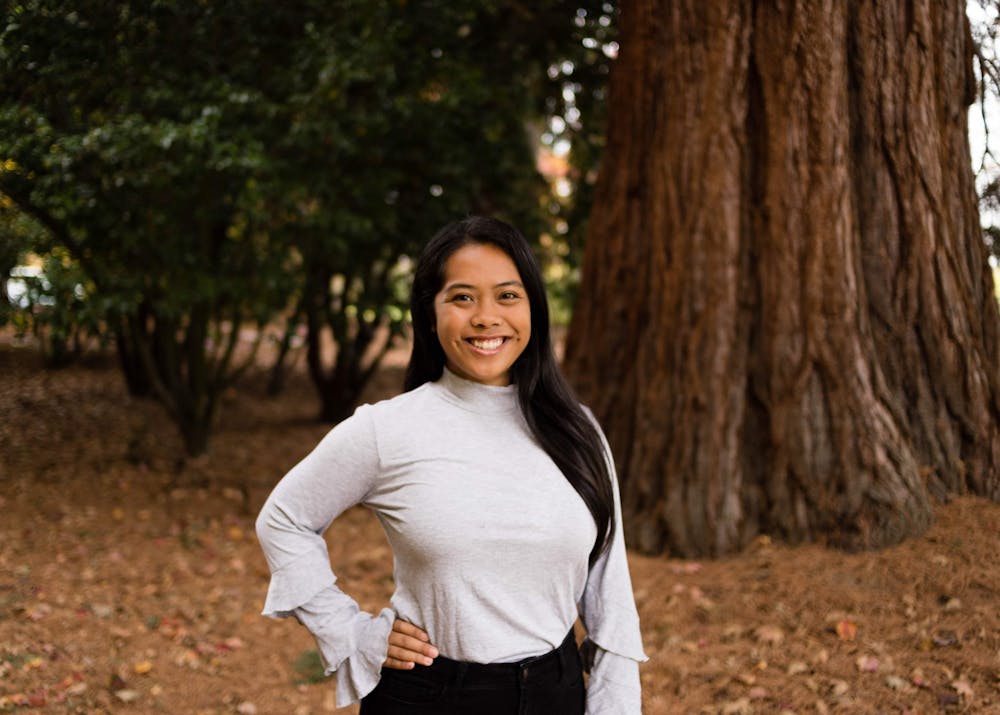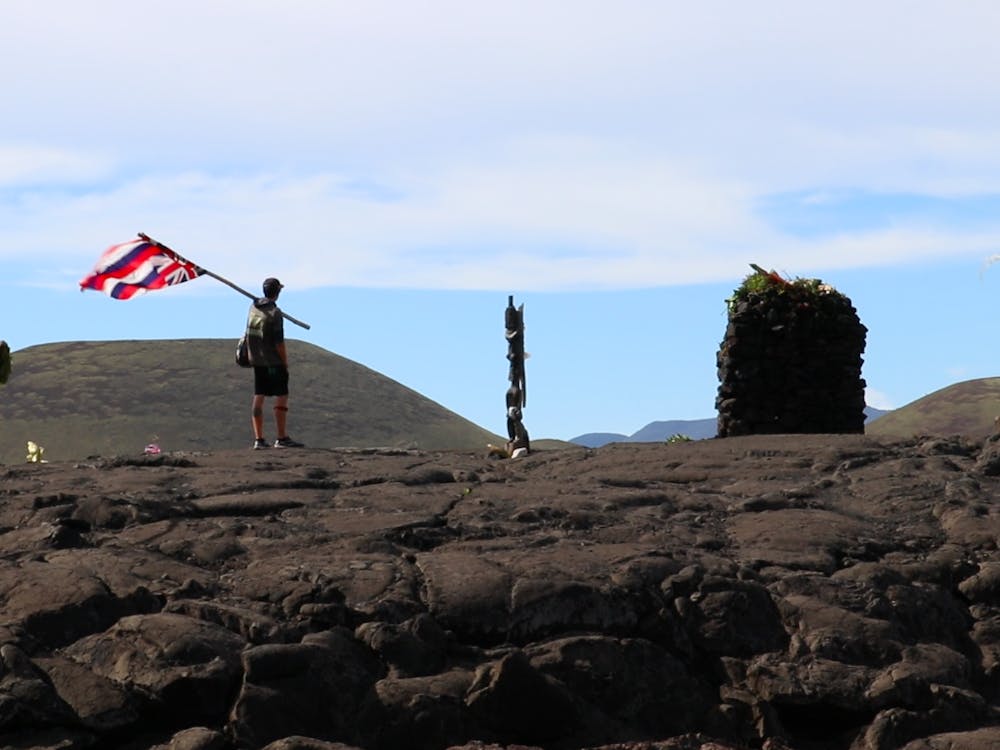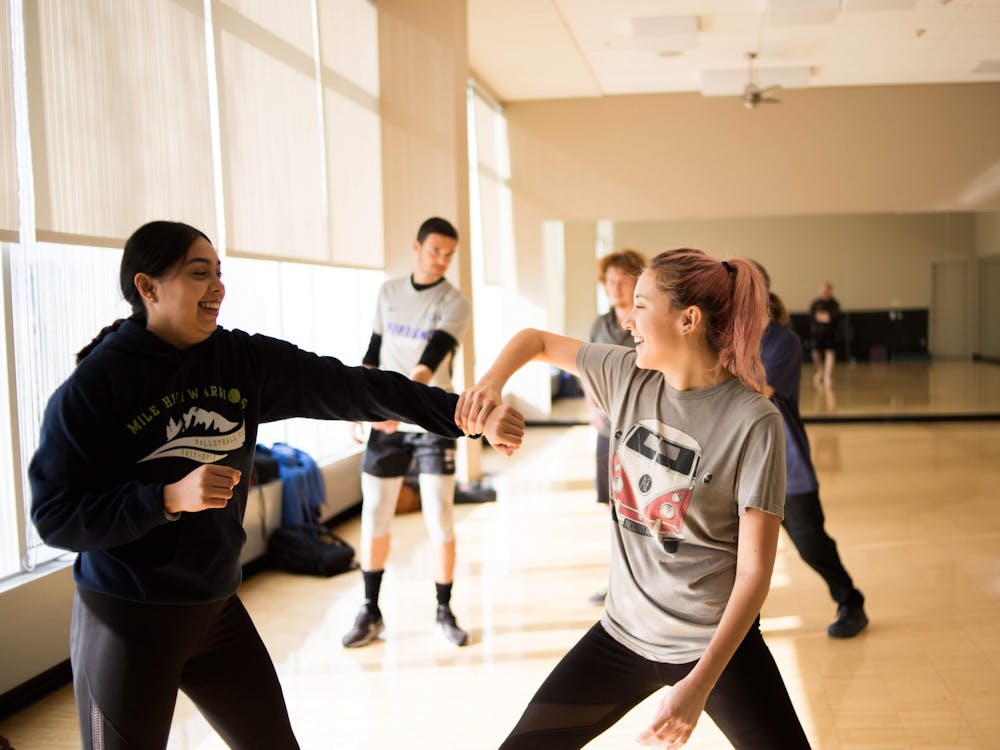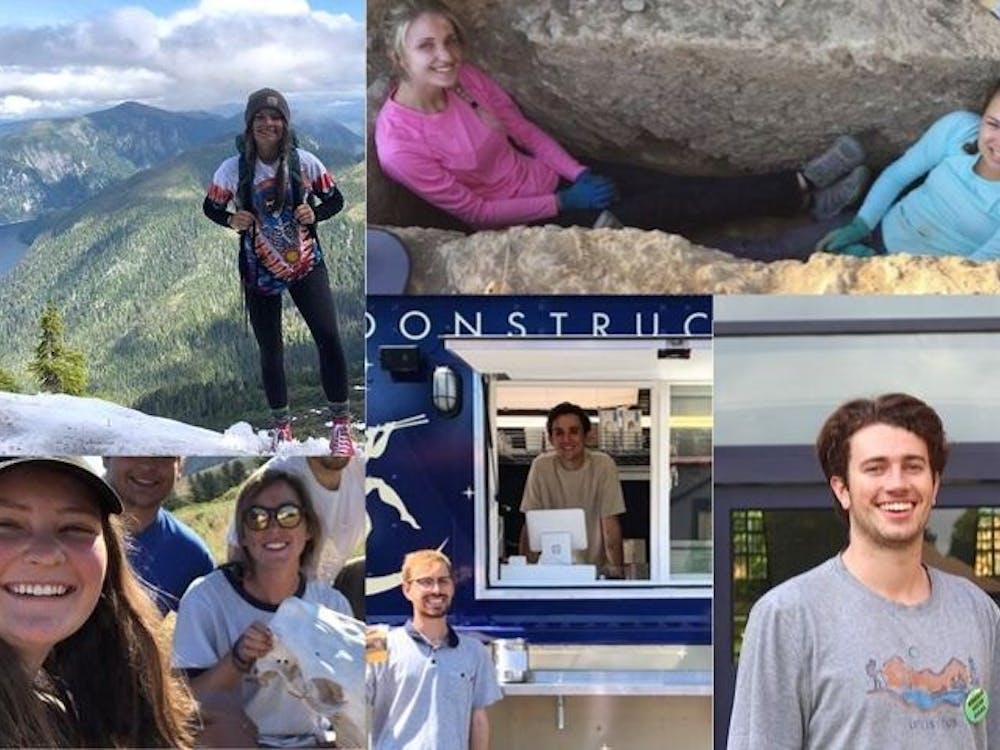Nerves started to take over my body, as I prepared my camera gear to film. Looking out of the car window, I began to see pitched tents and parked cars lined up on the side of the road with Hawaiian flags flying high in the sky. In my head, I asked myself, “What are you getting yourself into?”
Walking along the access road, I started to film what I saw. Sitting on the pavement were protest signs with words like “Native vs. Corporation,” “NOT FOR SALE,” “The Future is Keiki.” When I got to the base entrance of Mauna Kea was Puʻuhonua o Puʻuhuluhulu University, a place of Hawaiian learning where lāhui (nation) are welcomed to participate in teachings of mele (song) and oli (chant), malāma ʻāina practices (how to care for the land), history and moʻolelo (story), sciences, art and more under kumus (teachers) or Native Hawaiian practitioners.
Before entering the university, my family and I attended a brief orientation about what we were about to endure. We were told across the street from the university was where the protocol was held. All the members of the lāhui and kūpuna (elders) are welcomed to participate in chants, prayers, and hula during the hours of sunrise, noon and sunset.
During the protocol, a nine-year-old girl named Kaliko performed her rendition of “Hawaiʻi ‘78,” a song originally sung by Braddah Iz about the change that needs to happen in our islands in order to progress in the future. I felt a wave of mana (power) rush through me that I have never felt before. As I heard the words to this mele, tears started to fall down my face. Watching my people sing their hearts out along with Kaliko made me realize my place in all of this.
Going to Mauna Kea, I had one thing on my agenda — film a video for my capstone. I didn’t think I would participate in the protocol or in workshops at the university. My kuleana (responsibility) and place in this is to not only document what I needed for my capstone, but to present to my peers abroad the crisis and pain the people of Hawaiʻi are facing, and how they can be more diligent when learning about other cultures such as mine.
The United States is a media-dominated society in which its people rely heavily on mass media to portray and define things they have not experienced before. Especially for our generation, photography and videography have become an essential factor in influencing our perceptions and choices.
Known for its scenic mountain views of Diamond Head, sparkling blue beaches in the North Shore, ʻono (delicious) food from an array of cultures, and warm seventy-degree climate, media has made my home, Hawaiʻi, a popular tourist destination. However, underneath the beauty of what people see in the media, Hawai’i is in danger.
Following the increase in tourism due to media, Hawaiʻi started to lose its culture and identity. It is clear Kanaka Maolis (Native Hawaiians) are not surviving in American society with the increase in livelihood expenses. Moreover, the destruction of land and objectification of culture is widely executed by multinational corporations and landowners in collaboration with the state and county’s government.
In recent news, the conflict and resistance around the Thirty Meter Telescope have been shared in the media worldwide. However, not many people beyond the shores of Hawaiʻi understand why Kanaka Maolis are continuing to protect what is left of their sacred lands and practice traditions that are slowly becoming extinct. Since the islands were “discovered” by the western world, Kanaka Maolis had a long history of abuse from the leadership in the state. For example, the overthrow of the Hawaiian Kingdom by a group of caucasian businessmen and lawyers against Queen Liliʻuokalani and her government, and the ban of Hawaiian language instruction in schools soon after.
Hawaiʻi is a place of beauty, restoration, unique heritage and culture, and a place of Aloha. When you visit my home, here is what you can do to be aware of my culture and traditions:
Before you go on adventures on the island, be knowledgeable, respectful, and most of all safe. Research the hike, beach or location that you are stepping foot on. If you see warning signs that say ‘Kapu!’ (forbidden), please keep out.
If you know you can not swim, do not enter the water. Drowning while snorkeling is the leading cause of death for Hawaiʻi tourists. The water is very powerful — do not test it!
Do not go to a scenic site just to take photos. Yes, photos will always be needed to remember an experience. However, when you’re there, learn about the history of the site and why it came to be what it is today.
Support local organizations and entrepreneurs who are continuing to spread the Hawaiian culture through work in the community. Here are three of my favorite places to go to, to learn about Hawaiian culture: Iolani Palace, Hoʻokuaʻāina and Nā Mea.
If you plan to visit the Hawaiian islands soon, take into account that the island media has deemed to be “paradise” is currently in distress. Learn about Hawaiʻi by appreciating what it has to offer by immersing yourself into its history, culture, and people. By doing so, you will understand what my people are going through. Aloha ʻĀina!
Taylor Ursulum is the video producer for The Beacon. She can be reached at ursulum20@up.edu.








